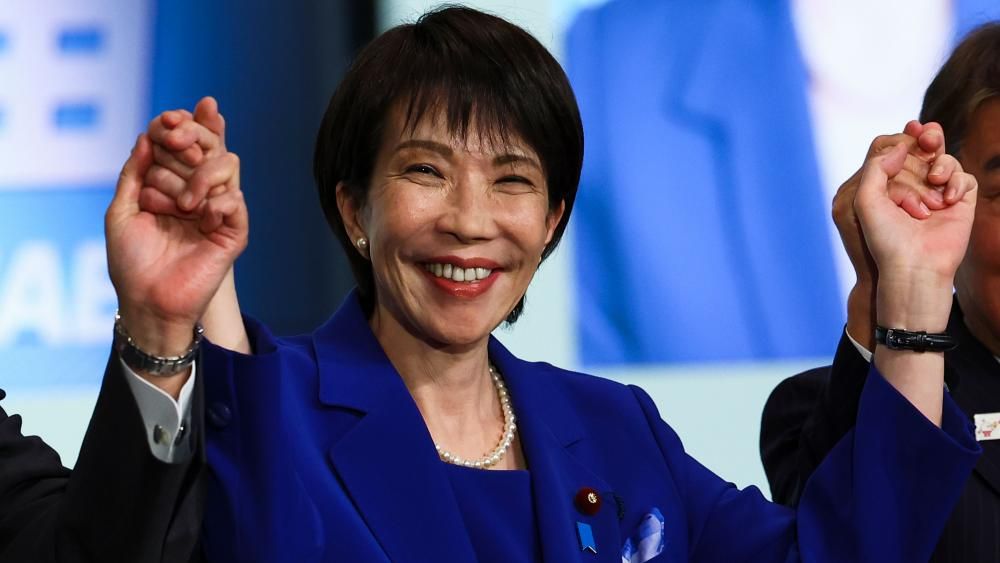
82. Japan is Back, but from where?
As anticipated, Sanae Takaichi, 64, has become Japan’s first female prime minister.
Following Donald Trump’s one-liner speech, she declared, “Japan is back,” and her goal is to build a strong and prosperous Japan.
Takaichi’s Liberal Democratic Party (LDP) has formed a coalition with the right-wing Japan Innovation Party, known as Nippon Ishin.
She received 237 votes in an election in the parliament’s 465-seat lower house and then won a similar vote in the upper house.
Last year, Takaichi ran unsuccessfully against former Prime Minister Shigeru Ishiba.
This is good news because Japanese politics has historically been less supportive of women. According to the World Economic Forum’s 2025 gender gap index, Japan ranked 118th out of 148 countries.
Although she promised significant female representation in her government, she appointed only two women to her cabinet.
She shares the ideological views of former Prime Minister Shinzo Abe. However, she is a passionate supporter of Margaret Thatcher and has indicated that she is influenced by social conservatism.
On the economic front, she favors aggressive public spending to boost the world’s fourth-largest economy. A critic of China, she opposes same-sex marriage but is against discrimination toward members of the LGBTQ+ community.
Let us hope she proves to be a good leader for the Japanese people. India’s history with female leaders has not been very encouraging.
From Indira Gandhi, who inherited the ‘elected’ prime minister's position, to Mamata Banerjee, the leadership of these women has shown disastrous results. Contrary to the belief that women are more caring, sensitive, and less cruel, the opposite has been observed.
During Indira Gandhi’s era, the death toll was high, including political deaths. These deaths resulted from her policy of appeasement, as India saw the highest number of religious clashes, including numerous deaths, during the 19 months of the Emergency.
She demonstrated through her actions that she didn’t value human lives in order to keep her chair intact. She ensured that the licence raj kept her party’s kitty full, and people relied on her local, inherently corrupt workers for even a bag of cement or a 50 kg sugar bag for their daughter’s marriage.
Then Uttar Pradesh had Mayawati, whose contribution is limited to creating large parks on valuable public land solely to promote herself, her party, and establish her party symbol.
About her knowledge of public administration, I will tell a story:
My village is about two miles from the main highways, which are called highways only in name, as the road width is barely 15-16 feet. When you leave that so-called highway, you have to pass through two small villages to get to my village.
However, just after leaving the highway, the second village has the majority of families belonging to the Mayawati’s caste. Under one of her schemes, a concrete road was constructed from the highway that ends at that village. Not beyond that. To get home, we had to get off the bicycle and walk because it was a kuchha road, unsuitable for bicycles.
Beyond my village, there are roughly 26 more villages before you encounter a different road on the other side. She was not worried about these villages or the thousands of people, including many students, who had to cease venturing out almost entirely during the rainy season.
Like the previous ‘honest’ Delhi chief minister, her publicity budget ensured that the media labeled her stupid policies, such as those mentioned above, as social engineering.
Even if you dismiss my opinion for whatever reason and say that she represents a specific community and is a Dalit, what about Mamata Banerjee, who has completely destroyed the democratic process in West Bengal?
During the Panchayat elections, thousands were openly killed in broad daylight. Her survival largely depends on infiltrators from a single community in Bangladesh who are given voter IDs. Not to go into detail about her outrageous statements.
The world has seen women like Margaret Thatcher and Angela Dorothea Merkel, but I am still apprehensive.
Although when I see that six out of Iceland’s 11 cabinet members are women, including Prime Minister Kristrún Frostadóttir, or that in Finland women hold 11 of 19 cabinet positions, I can’t help but wonder.